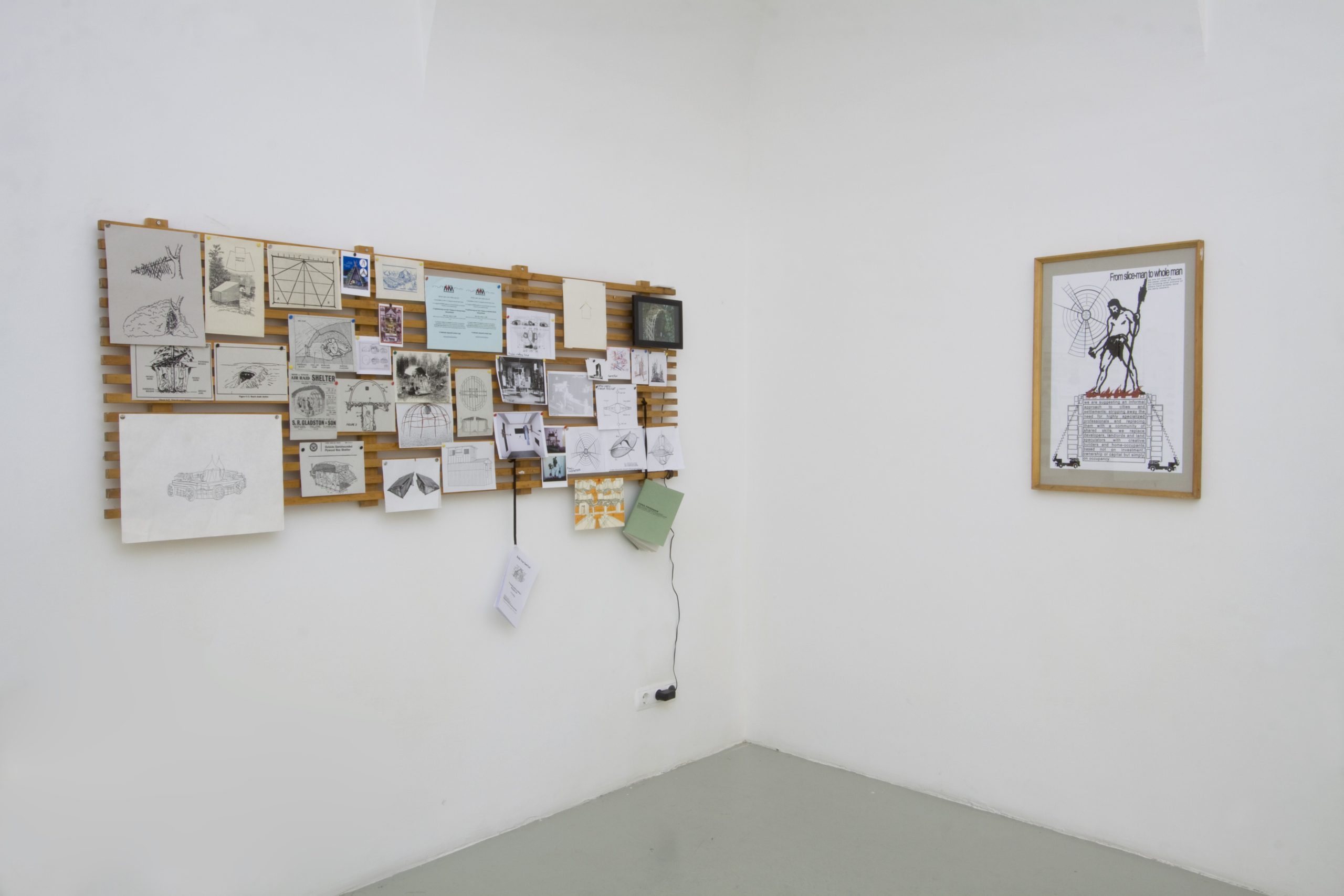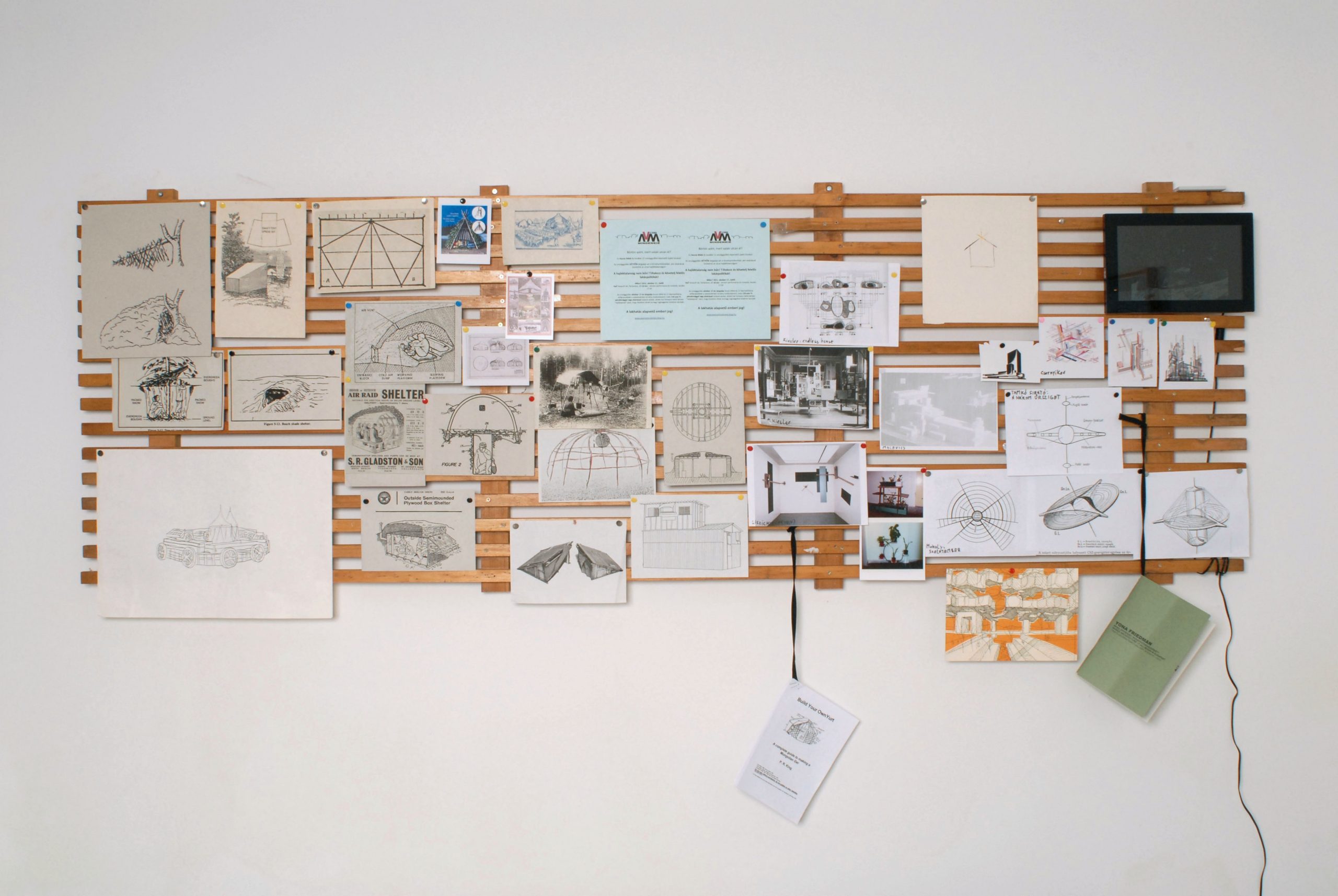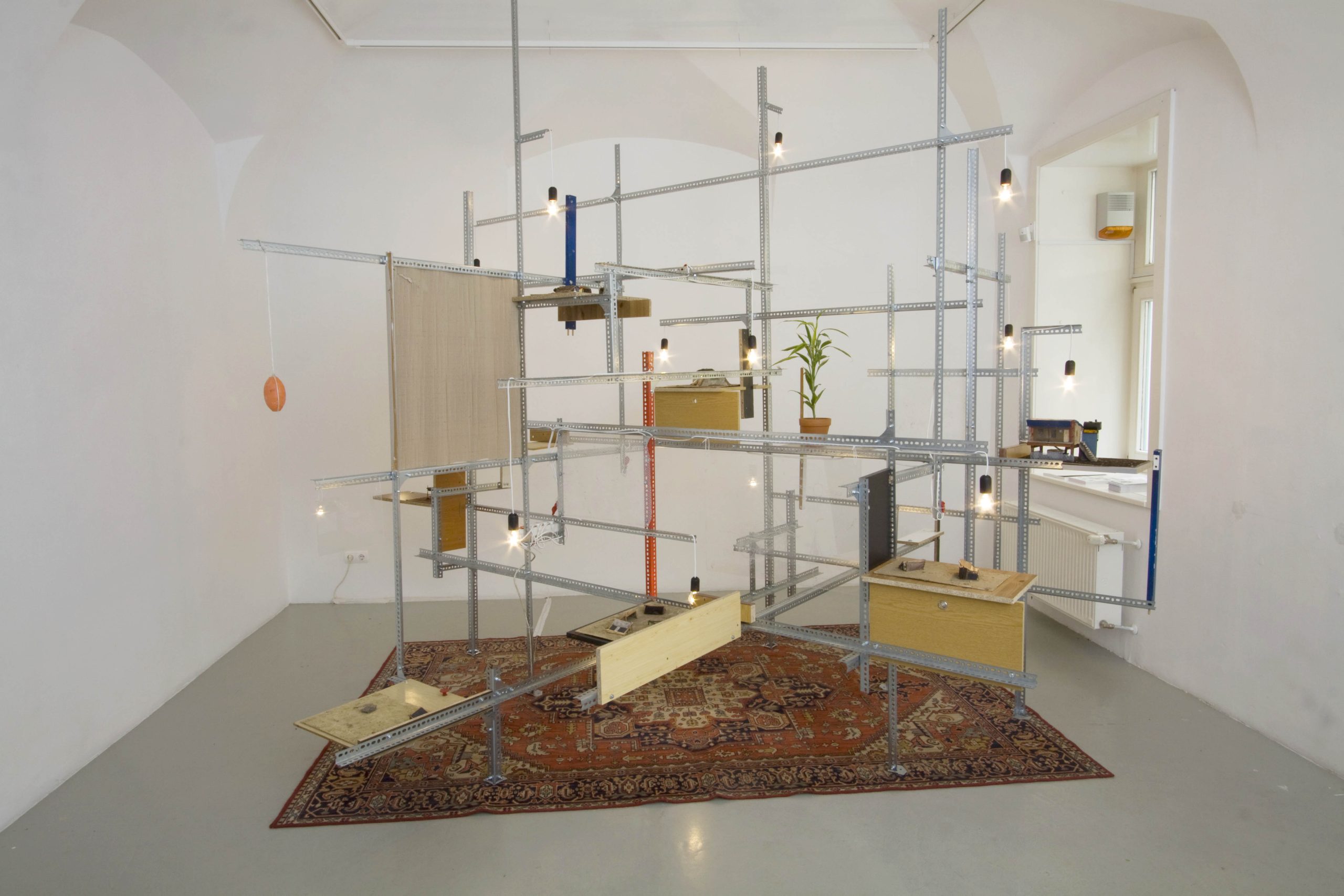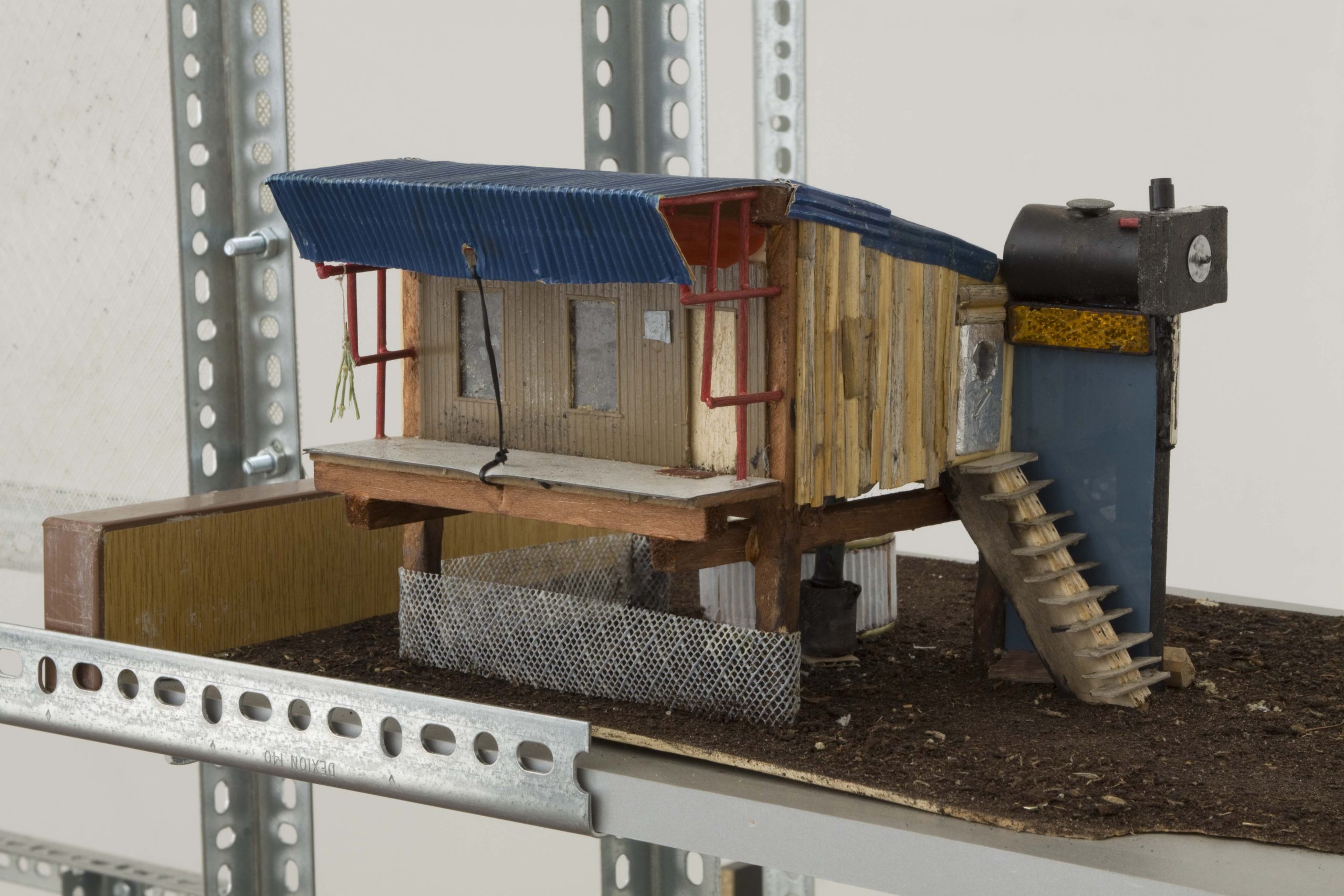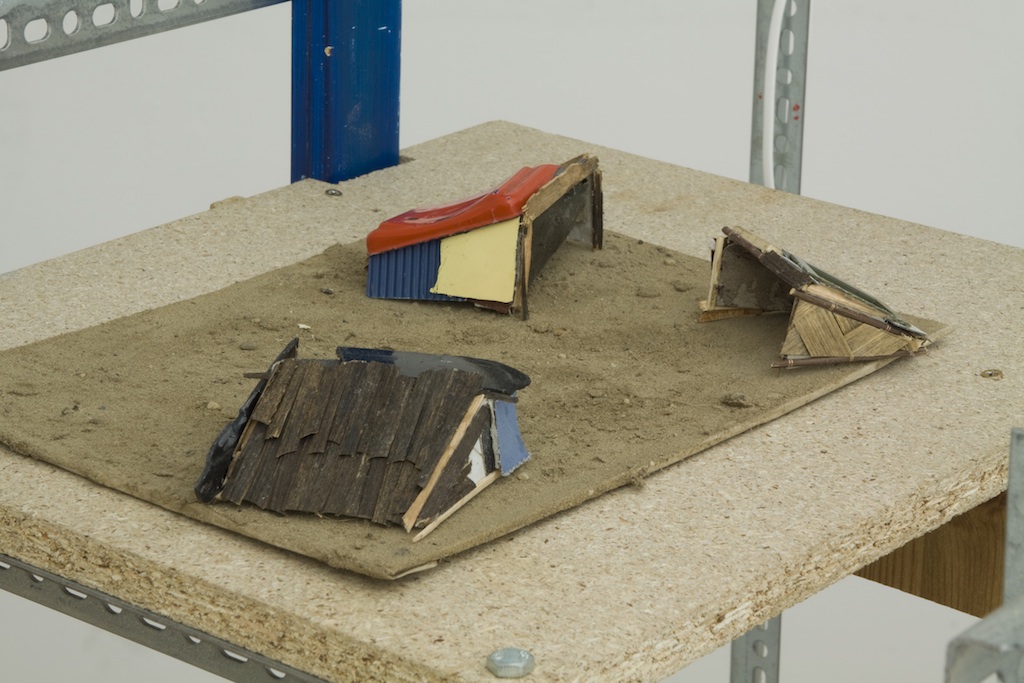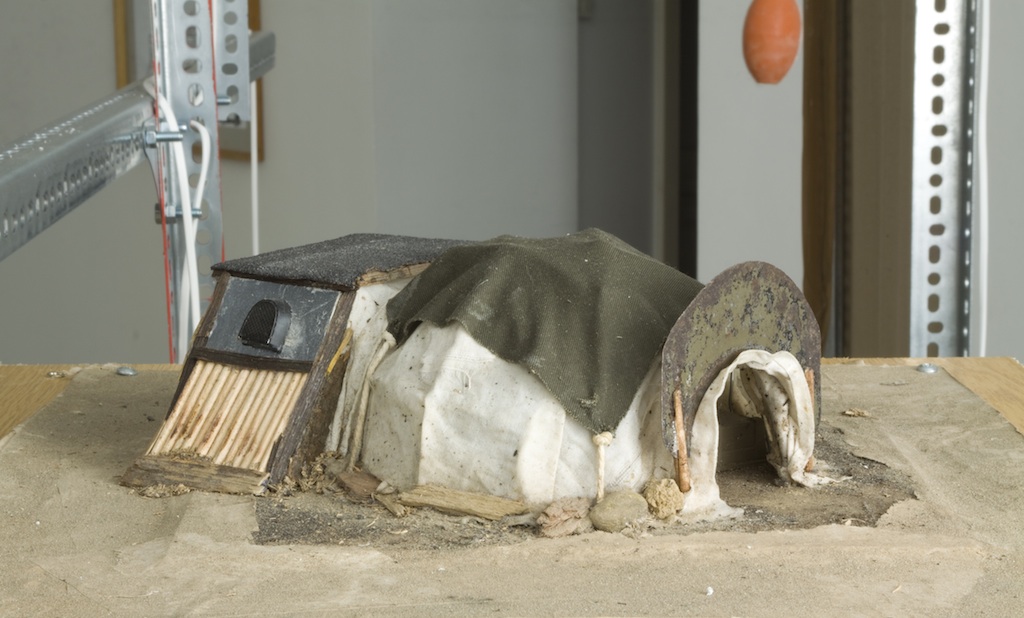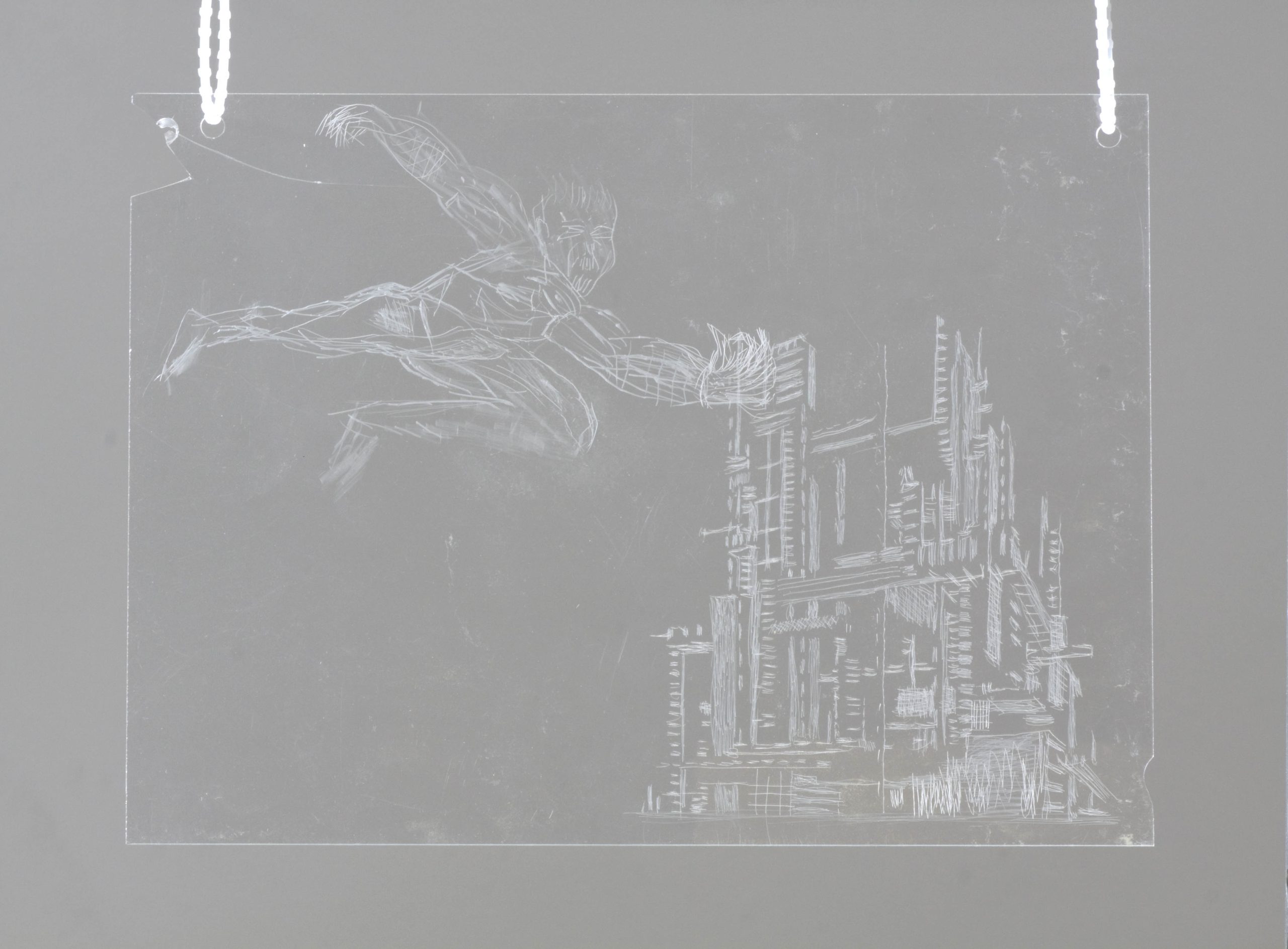The concept of the megastructure, or the megacity, originated in the early sixties, when Constant Nieuwenhuys with his New Babylon, or Yona Friedman with his Ville spatiale, proposed the elaboration of a new type of urban fabric, which at the same time could generate the spaces of a new, transformed society. Kaszás’ work, in part, reflects on the modernist and somewhat technicist character of Utopian megastructures, not in the least from a cynical viewpoint, but rather in a “realist” way.
One of the main pillars of this realism is the notion of competence, responsibility – a call for the individual to participate in their own life, to mould its spaces, and breaking away from the safety of the much less Utopian, increasingly crushing economic megastructures, to utilise everything at one’s disposal. The ideal from which the megastructure originates is a typical vision of a free society, thus becoming an important strategy on the level of quotidian reality: since in a crisis situation, or following collapse, we cannot act differently – it is worth building by economising on both time and material. In the course of forming such a strategy, the significance of folk science and creative improvisation also grows. He who is capable of building his own domicile, even under extreme conditions, will have not only his chance of survival increase, but will also become more independent of the system in his momentary existence.
In this work that is built from recycled elements, however, the Utopia of modernism has its place, primarily from an aesthetic perspective. It is as if its ideas and vocabulary were to become part of the post-apocalyptic folklore of future groups of people. The survivors of collapse would fashion such a refuge from waste or ruins, in which the fading collective memory of modernism would be reflected…
